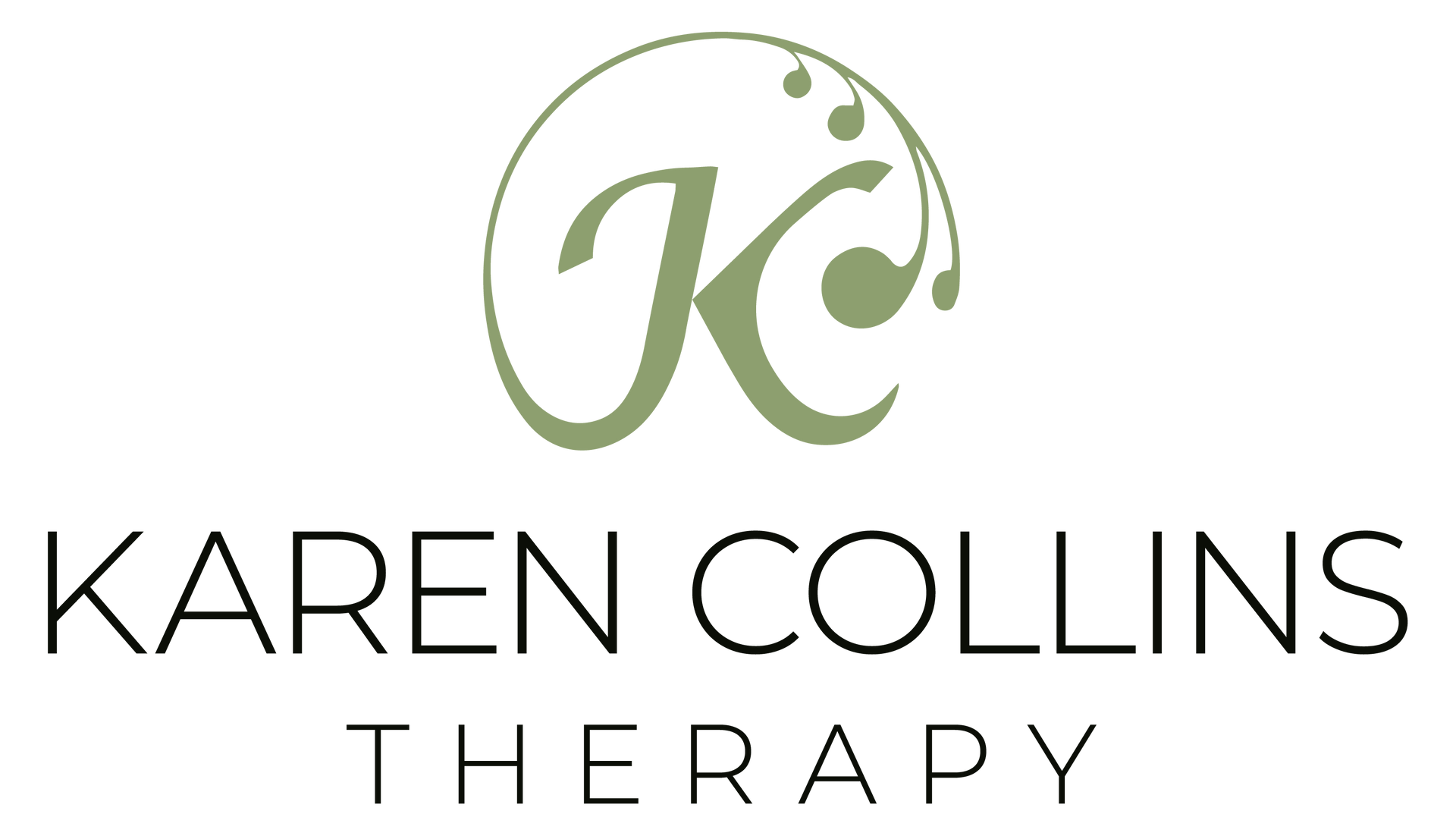Anxious All the Time? How to Slow Down Racing Thoughts
Introduction
Does your mind feel like it's running a marathon at 3 AM? If racing thoughts are keeping you awake, making you feel anxious during the day, or causing you to spiral into worst case scenarios, you're not alone. Many people in Petaluma and throughout Marin County experience this overwhelming mental chatter that seems impossible to turn off.
Racing thoughts can make even simple tasks feel overwhelming. When your mind won't stop, it affects everything, your sleep, your relationships, and your ability to enjoy life. The good news? There are proven ways to calm your spinning mind and regain control over your thoughts.
Article Outline
In this guide, you'll learn:
- What causes racing thoughts and why they happen
- Simple breathing techniques to stop your mind from spiraling
- Grounding exercises to bring yourself back to the present
- How to create a "worry time" to manage anxious thoughts
- When racing thoughts may signal a deeper mental health condition
- Practical mantras and mindfulness practices that work
- Movement and distraction techniques to quiet your mind
- How to recognize thought patterns that fuel anxiety
- When to seek help from a mental health professional
- Building long-term coping strategies for anxious feelings
What Causes Racing Thoughts and Why Your Mind Won't Stop
Racing thoughts often feel like your brain is stuck in overdrive. Your nervous system responds to stress by flooding your mind with thoughts, some helpful, many not. These rapid-fire thoughts may jump from one worry to another, creating an exhausting mental loop.
Several factors can trigger racing thoughts. Stress from work, relationships, or major life changes often sets them off. Sometimes anxiety disorders, bipolar disorder, or attention deficit hyperactivity disorder contribute to this mental spinning. Even caffeine, lack of sleep, or certain medications can cause your mind to race.
The key thing to remember is that racing thoughts are your brain's attempt to solve problems or prepare for danger. Unfortunately, this mental habit often creates more anxiety than it solves. Understanding that thoughts may feel urgent but aren't always accurate can be the first step toward finding calm.
Simple Breathing Techniques to Stop Racing Thoughts
When your mind starts to spiral, your breath becomes your anchor. Deep breathing signals your nervous system to calm down and helps stop your mind from spinning out of control.
Try this simple technique: Place one hand on your chest and one on your belly. Inhale slowly through your nose for four counts, letting your belly rise while keeping your chest still. Hold for four counts, then exhale through your mouth for six counts. This type of deep breathing activates your body's relaxation response.
Another powerful method is the 5-4-3-2-1 grounding technique. When racing thoughts take over, identify five things you can see, four you can touch, three you can hear, two you can smell, and one you can taste. This brings your focus back to the present moment and helps quiet your mind.
Creating "Worry Time" to Manage Anxious Thoughts
One of the most effective ways to stop racing thoughts is to give them a designated time and place. Set aside 15-20 minutes each day as your official "worry time." When anxious thoughts come up throughout the day, tell them "I'll deal with you at 3 PM."
During worry time, write down your concerns and actually think about them. Ask yourself: Is this something I can control? What's one small action I could take? Often, you'll find that thoughts that seemed urgent during the day lose their power when you examine them closely.
This technique works because it teaches your brain that not every thought needs immediate attention. You're not avoiding your worries, you're managing them on your terms instead of letting them manage you.
Grounding Exercises to Bring Yourself Back to Present
When racing thoughts pull you into past regrets or future fears, grounding exercises can bring yourself back to the here and now. These techniques help you get out of your head and into your body.
Try the "feet on the floor" method: Sit comfortably and focus on the feeling of your feet touching the ground. Notice the temperature, pressure, and texture. This simple act of attention can interrupt thought spirals and calm your mind.
Another effective approach is progressive muscle relaxation. Starting with your toes, tense each muscle group for five seconds, then release. Work your way up your body. This helps you recognize where you hold stress and teaches your body how to let go.
Mantras and Mindfulness Practices That Actually Work
A good mantra can be like a gentle friend redirecting your attention when thoughts get overwhelming. Choose phrases that feel authentic to you: "This feeling will pass," "I am safe right now," or "One breath at a time."
Practicing mindfulness doesn't require hours of meditation. Even three minutes of focused attention can help. Close your eyes and listen to sounds around you, or focus on something simple like your breath moving in and out. The goal isn't to stop thinking completely, it's to notice thoughts without getting caught up in them.
Remember, mindfulness practice gets easier with time. Your mind will wander, and that's completely normal. Each time you notice and gently bring your attention back, you're building your mental muscles.
Movement and Distraction Techniques to Quiet Your Mind
Sometimes the best way to handle racing thoughts is to get out of your head entirely. Physical movement can shift your focus and calm anxiety naturally. Take a walk around Petaluma's beautiful neighborhoods, do some gentle stretching, or try dancing to your favorite song.
Engaging activities that require focus can also provide relief. Try calling a friend, working on a puzzle, or doing something creative with your hands. The key is finding activities that take your mind off the worry loop and give you a sense of accomplishment.
Even simple tasks like organizing a drawer or making a cup of tea can help. These activities ground you in the present and give your anxious mind something concrete to focus on instead of spinning in circles.
Recognizing Thought Patterns That Fuel Anxiety
Learning to identify your specific thought patterns is crucial for managing racing thoughts. Do you tend to catastrophize, imagining the worst-case scenario? Do you mind-read, assuming you know what others are thinking? Or do you focus on things that make you anxious instead of what's going well?
Notice how thoughts can make situations seem worse than they are. When you catch yourself in a negative thought spiral, ask: "Is this thought helpful? Is it true? What would I tell a friend in this situation?" This isn't about positive thinking, it's about thinking more accurately.
Keeping a thought journal can help you spot patterns. Write down what triggered racing thoughts, what you were thinking, and how you felt. Over time, you'll start to see themes and can develop specific strategies for your most common worry patterns.
When Racing Thoughts Signal a Deeper Mental Health Condition
While occasional racing thoughts are normal, persistent episodes may indicate an underlying mental health condition. If racing thoughts keep you awake regularly, interfere with daily activities, or come with other symptoms like extreme mood swings, it's important to seek professional help.
Anxiety disorders, bipolar disorder, and other conditions can cause racing thoughts. A mental health professional can help determine if there's an underlying cause and suggest appropriate treatment options like cognitive behavioral therapy or other approaches.
Don't hesitate to reach out if racing thoughts are significantly impacting your life. Getting support isn't a sign of weakness, it's a smart step toward feeling better. As a therapist in Petaluma, I see many people who wish they'd sought help sooner.
Building Long-Term Coping Strategies
Managing racing thoughts is a skill that improves with practice. Start by choosing one or two techniques from this article and use them consistently for a week. Notice which methods work best for you and in what situations.
Building healthy daily habits supports your mental health long-term. Regular sleep, gentle exercise, and limiting caffeine can all help reduce the frequency of racing thoughts. Creating routines that include relaxation time teaches your mind that it's safe to slow down.
Remember that progress isn't always linear. Some days will be harder than others, and that's okay. The goal isn't to never have anxious thoughts, it's to develop confidence that you can handle them when they arise.
Summary: Key Takeaways for Calming Racing Thoughts
Here are the most important strategies to remember:
- Use your breath as an anchor - Deep breathing techniques can quickly calm your nervous system
- Set boundaries with worry - Designate specific worry time instead of letting thoughts run wild all day
- Ground yourself in the present - Use your senses to interrupt thought spirals and return to the here and now
- Choose helpful mantras - Simple phrases can redirect your attention when thoughts get overwhelming
- Move your body - Physical activity and engaging distractions can quiet mental chatter
- Recognize your patterns - Understanding your specific thought triggers helps you respond more effectively
- Know when to seek help - Persistent racing thoughts may benefit from professional support
Take the Next Step Toward Calm
If racing thoughts are regularly disrupting your life, you don't have to figure this out alone. As an experienced therapist serving Petaluma, Marin County, and Sonoma County, I help people develop personalized strategies for managing anxiety and finding peace of mind.
Ready to slow down your spinning mind? Contact Karen Collins Therapy today to schedule an appointment. Together, we can work on practical techniques tailored specifically to your needs and help you regain control over your thoughts.
Please note: This information is for educational purposes and is not a substitute for professional medical advice. If you're experiencing severe anxiety or racing thoughts that interfere with daily functioning, please consult with a mental health professional.












